Michelin CrossClimate SUV vs Michelin CrossClimate 2
Michelin CrossClimate SUV vs Michelin CrossClimate 2: When comparing all-season tire options, the Michelin CrossClimate SUV and the Michelin CrossClimate 2 often take center stage. Both promise excellent year-round performance, but which one truly excels? Let’s dive into a thorough comparison.
But first, let’s talk about where these tires should improve.
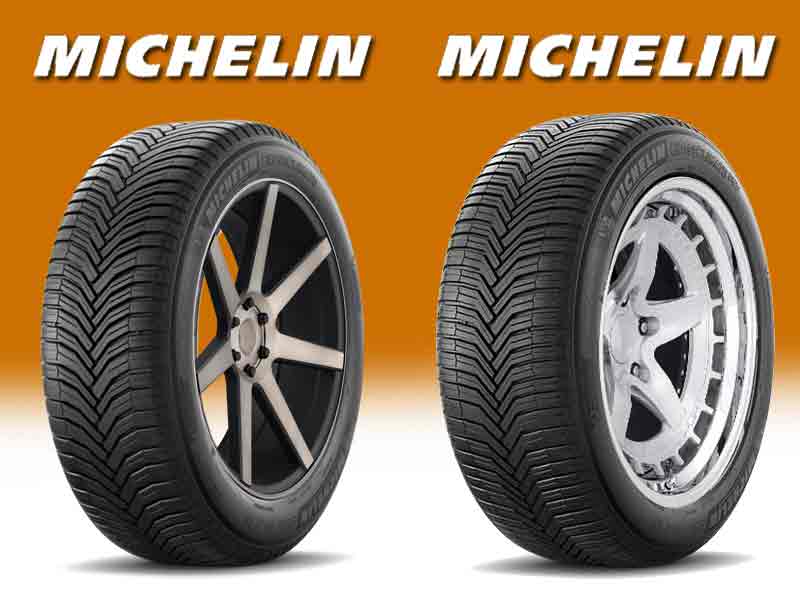
Examine the treads on these tires closely. They hold the key to knowing which to choose. In fact if you visit my "tread design" page , picking the right tire would never bother you.
- Michelin CrossClimate 2: Its limitations lie in fluffy snow traction and shock absorption from road imperfections.
- Michelin CrossClimate SUV: This tire variant could improve on fuel efficiency, wet and dry traction, handling, and noise reduction. Its softer compound and heavier weight contribute to these shortcomings.
And so this brings us to the test scores, they achieved in our testing.
Table of Contents

Test Scores – Out of 10
Design comparison.
The Michelin CrossClimate 2 gives you a unique and well-designed directional tread pattern.
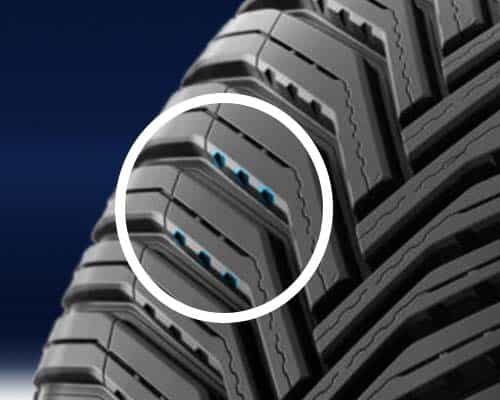
The tire’s extended arms are interwoven, offering remarkable snow clearing and water expulsion capabilities.
These arms are divided up in to two, with the help of longitudinal slits, creating a discernible separation between the central and shoulder areas.
Speaking of shoulder lugs, they get to have thicker siping, and have wider tread voids between them.
While the central blocks are more closed up, and have a combination of straight and wave-like siping (where shoulder lugs only have rectilinear pattern of those sipes).
Moreover, these lugs also have snow vices on them, which are basically biters, especially designed for all kinds of snowy terrains.
Moving towards the Michelin CrossClimate SUV, this tire also features a directional pattern.
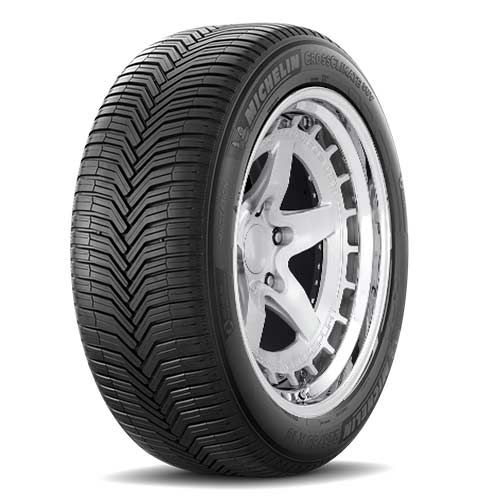
But still, there are a few things that are different on this tire compared to Crossclimate 2.
First off, the its lugs are thinner, meaning, they are more voided up, not only on shoulders but also on the central area.
Moreover, the tire is missing with interlocking sipes, though its siping slits all over are thicker.
Though speaking of slits, its tread is equipped with similar longitudinal slits, which separates the shoulders form the central area.
Fuel Efficiency
Fuel efficiency is significantly affected by the interaction between tires and the road, and its primarily determined by the rolling resistance, established by the friction between the tire’s tread and the road surface.
And here, although both tires aren’t that Eco-friendly, the Michelin Crossclimate 2 still takes the larger piece of the pie.
This is because the tire has a more sleek design, where its firmer rubber blend does not stick the road with as much friction.
Whereas, with a heavier weight, and a softer compound, the SUV variant experiences more lug flex, causing more energy to be used (in to the molding of the blocks, instead of rolling the tire as a whole).
But still, note that, its only on the paper, and in real world, the difference is negligible.
Durability and Treadwear
The CrossClimate SUV’s slightly higher rolling resistance also causes faster treadwear. The tire’s additional weight puts strain on each lug, increasing friction with the road and thus accelerating rubber wear, as its lugs rub against the road.
This effect is further intensified by its softer tread compound, which basically is more susceptible to burning off faster.
Though the tire’s extra weight is due to its robust structure, making it more durable than the Michelin CrossClimate 2.
It features a more solid design featuring wide steel belts, a continuous full-cover reinforcement layer, and folded belt-edge tape, which provides unmatched reliability and excellent protection against punctures.
Winter Performance
In terms of winter traction, the CrossClimate 2 outperforms many, including its SUV variant.
Its extended lugs efficiently move slush and snow, more efficiently, providing better forward momentum compared to the Crossclimate SUV, despite both tires have 3 peak mountain snowflake (3PMSF) ratings, and a directional tread pattern.
Note : It’s important to note that the 3PMSF rating mainly measures acceleration abilities, and its not a measure of braking or handling capability of a tire, which is a common misunderstanding. A tire having this rating simply does 10% better than an average all-season tire (not having that rating of course). Also, tires with this rating, aren’t as capable as winter tires.
Though there’s one area where Crossclimate SUV is superior, and that is fluffy snow traction.
When it comes to powdery snow, or slightly thicker snowy terrains, the SUV variant is able to offer a better snow trapping abilities, creating greater snow-to-snow contact – an ideal condition as snowflakes stick to each other, better than to tire rubber.
And yes, the tire’s softer (more) thermally adaptive rubber also ensures better flexibility in colder temperatures too, comparatively.
Wet Traction
In wet conditions, the CrossClimate 2 performs better than the CrossClimate SUV, due to its specific tread design and greater in number siping.
These sipes, or small cuts in the tread, effectively remove water particles, enabling better grip. They basically suck up the water particles in their slits, allowing the tread’s rubber to be able to contact the relatively dried up surface with greater friction.
With the combination of interlocking central siping, and the multi-angled shoulder slits, the Crossclimate 2 gets to offer better overall handling times and braking efficacy.
(Braking measures directional grip, while lap times calculate handling).
Furthermore, hydroplaning resistance, is also a crucial part of overall wet performance and here both tires do same.
Their V-shaped, directional lug structure excel equally at moving water away from the tread, allowing for similar float speeds in both curved and straight aqua tests.
Dry Grip And Handling
First things first, understand that when a tire goes straight, it puts most of its weight on the middle tread. And when it turns, this weight moves to the edges because of inertia.
So central area defines dry/directional grip, and shoulders tell about handling.
And in both these scenarios, the Crossclimate 2 does better, where it offered 5 feet shorter (average), braking distances, and a 2 second faster lap times (again on average).
The tire basically has a more closed up central section, offering superior straight line grip, and it’s lighter weight allows for superior handling feedback, when the tire corners.
And hes, its rounded contact patch also helps, shift this weight smoothly from the center to the edges, which makes steering better.
Tread Noise
Tire noise is primarily due to air interaction with the tread.
What’s happening here is that, the air particles typically enter through shoulder gaps, hitting the surrounding walls, where the impact is what’s producing noise.
So it makes sense why the Michelin Crossclimate 2 is taking the lead here, and the SUV variant is lacking with its larger tread voids, allowing more air particles to enter.
Moreover, the Crossclimate SUV’s softer rubber also tends to reflect more air particles, creating increased in-groove resonance (its basically the echoing of the noise waves, within the tread).
On-Road Vibrations
Ride quality is also related to the tire’s ability to absorb road imperfections.
And so here, the softer compound of the Michelin Crossclimate SUV shines.
Simply put it’s rubber, made of a higher silica content and softer inner cap ply absorb road shocks more effectively, compared to its counterpart.
So the tire might not be so great when it comes to handling stability (with its greater weight), it still excels overall in case of impact comfort performance.
To Conclude
Michelin CrossClimate 2 excels in:
- Fuel Efficiency : The tire’s sleek design and firmer rubber blend create less road friction, making it more fuel-efficient compared to its SUV variant.
- Wet Traction : Its specific tread design and numerous siping effectively remove water particles, offering superior handling times and braking efficacy. Both tires perform similarly in hydroplaning resistance.
- Dry Grip and Handling : The CrossClimate 2 offers better dry grip due to its more closed central section. It also provides better handling feedback during cornering due to its lighter weight and rounded contact patch.
- Tread Noise : It offers a quieter ride due to smaller tread voids which restrict air particle entry, and therefore noise production.
Michelin CrossClimate SUV excels in:
- Durability : Its extra weight, due to its robust structure featuring wide steel belts, a continuous full-cover reinforcement layer, and folded belt-edge tape, makes it highly durable and puncture-resistant.
- Fluffy Snow Traction : In snowy terrains, especially powdery or thicker ones, the SUV variant performs better due to its superior snow trapping abilities, creating greater snow-to-snow contact.
- On-Road Vibrations : Its softer compound made of higher silica content and softer inner cap ply effectively absorbs road shocks, providing a more comfortable ride.
Some Posts To Ckeck Out BTW
- Michelin Defender 2 vs Crossclimate 2
- Goodyear Assurance Weatherready vs Michelin Crossclimate 2
- Michelin CrossClimate 2 vs Defender LTX MS
- General Altimax RT43 vs Michelin CrossClimate 2
- Michelin CrossClimate 2 vs Michelin Primacy MXM4
Enjoyed this read? Share it with others!
Leave a Comment
Your email won't be published or shared.

- 10 shops, 90 283 products
- Price comparison
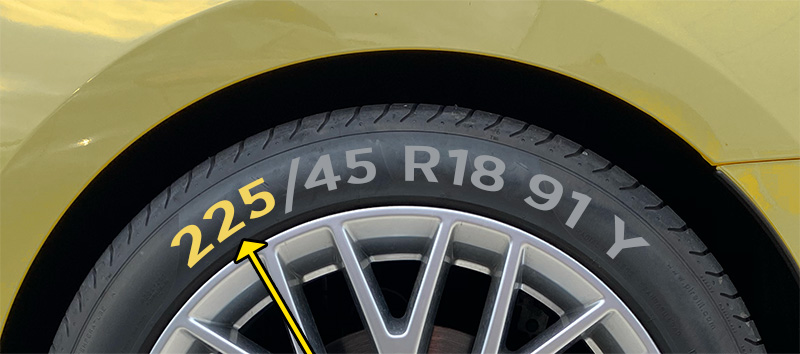
- Michelin Pilot Sport 4
Comparison: Michelin Latitude Tour HP vs. Michelin Pilot Sport 4
Dimensions and prices.
Both of the tyres in this comparison are made by Michelin , which is a brand from France. In this particular case, the Michelin Pilot Sport 4 has a better rating of 88% compared to 17% of the Michelin Latitude Tour HP. When it comes to comparison, eu labels can be also interesting - 69% of Michelin Latitude Tour HP has C wet grip rating, whereas 84% of Michelin Pilot Sport 4 has A rating.
Number of sizes available
Number of tests, best position in test, worst position in test, average position in tests, year of the last test, best rating in test, worst rating in test, aquaplaning - cross, aquaplaning - longitudal, wet braking, wet circle cornering, wet handling, wet braking according to eu label, dry driving behavior, dry braking, dry handling, rolling resistance, fuel consumption according to eu label, exterior noise, outside noise accoring to eu label, add to comparison.
- Best summer tyres
- Tyres for ev cars
- Best dry-handling summer tyres
- Best summer rain tyres
- Best handling summer tyres
- Quietest summer tyres
- Most economical summer tyres
- Best anti-aquaplaning summer tyres
- 205/55 R16 Autobild 2024
- 225/45 R17 ACE 2024
- 225/55 R17 Autobild 2024
- 235/55 R19 Autobild 2024
- 265/35 R19 Autobild 2024
- 215/55 R17 ADAC 2024
- 225/45 R17 Autozeitung 2024
- 235/55 R18 Automotorsport 2024
- 215/40 R18 Sport Auto 2024
- 215/55 R17 Vibilagare 2024
- 225/65 R17 Autobild 2023
- 205/55 R16 Autoklub ČR 2023
- 205/55 R16 ADAC 2023
- 225/45 R18 Autobild 2023
- Esa+Tecar Spirit Pro
- Norauto Prevensys 4
- Goodyear Eagle F1 Asymmetric 6
- Goodyear Efficientgrip 2 SUV
- Goodyear Eagle F1 Asymmetric 5
- Pirelli P ZERO PZ4
- Pirelli Cinturato P7 C2
- Pirelli Cinturato P7
- Nexen N Fera Primus
- Nexen N fera Sport
- Nexen N fera Sport SUV
- Best winter tyres
- Best snow tyres
- Best ice tyres
- Best dry-handling winter tyres
- Best winter rain tyres
- Quietest winter tyres
- Most economical winter tyres
- Best anti-aquaplaning winter tyres
- 225/45 R17 ADAC 2023
- 205/60 R16 ADAC 2023
- 225/40 R18 Autobild 2023
- 235/55 R18 ARBÖ 2023
- 225/40 R18 Sport Auto 2023
- 225/45 R17 Autoexpress 2023
- 225/45 R18 Tyre Reviews 2023
- 225/60 R18 Autobild 2023
- 235/60 R18 Tyre Reviews 2023
- 255/45 R20 Automotorsport 2023
- 215/55 R17 Autobild 2022
- 185/65 R15 ADAC 2022
- Kleber KRISALP HP3
- Kleber Krisalp HP2
- Continental
- Continental WinterContact TS 870
- Continental WinterContact TS 870 P
- Continental WinterContact TS 860
- DUNLOP Winter Sport 5
- Dunlop SP Winter Response 2
- Dunlop Winter Sport 5 SUV
- Michelin PILOT ALPIN 5
- Michelin Pilot Alpin 5 SUV
- Michelin Alpin 6
- GoodYear UltraGrip Performance 3
- Goodyear Ultragrip Performance+ Suv
- GoodYear UltraGrip Performance+
- Best allround tyres
- Best allround tyres on snow
- Best dry-handling allround tyres
- Best allround rain tyres
- Best handling allround tyres
- Quietest allround tyres
- Most economical allround tyres
- Best anti-aquaplaning allround tyres
- 205/55 R16 Tyre Reviews 2024
- 225/45 R17 Autobild 2023
- 235/65 R17 Autobild 2023
- 195/65 R15 Tyre Reviews 2023
- 195/55 R16 Autobild 2022
- 205/55 R17 ARBÖ 2022
- 225/75 R16 Autobild 2022
- 205/55 R16 Autoklub ČR 2022
- 225/45 R17 Tyre Reviews 2022
- 225/50 R18 Autobild 2022
- 235/55 R18 Gute-Fahrt 2022
- 275/65 R18 Tyre Reviews 2022
- 215/75 R16 Promobil 2022
- GoodYear Vector 4Seasons SUV Gen-3
- GoodYear Vector 4Seasons Gen-3
- GoodYear Vector 4Seasons Cargo
- Michelin CrossClimate 2
- Michelin CrossClimate 2 SUV
- Michelin CrossClimate SUV
- Continental AllSeasonContact 2
- Continental VanContact 4Season
- Continental AllSeasonContact
- Hankook Kinergy 4S2 X H750A
- Hankook Kinergy 4S2 H750
- Hankook Kinergy 4S
- Rotalla Setula Van 4 Season RA05
- Rotalla Setula 4 Season RA03
Save up to $150 on your next tires.
Michelin latitude tour hp review.

627 User Reviews
16 Out Of 34
Review summary.
Based on our research and analysis of user and professional reviews, we have concluded that this tire is a good deal for the prince and the performance provided. With middle-of-the-road ratings in terms of dry grip, wet grip, handling, road feedback, wear, comfort, and snow grip, this tire is a suitable deal for those who don’t want to spend a fortune on their all-season tire.
- The all-season tread works well for various weather and road conditions
- The tread area provides a stable and responsive feeling during tight turns
- Ranked highly by users in terms of dry performance and comfort performance
- Does not rank very highly in terms of ice grip
- According to user reviews, this tire only earned a 5.8 out of 10 in terms of ‘Would You Recommend?’
- This tire only earned a 6.1 out of 10 for winter and snow performance
Survey stats
Test results, 14th of 15 tires 2017 adac suv summer tire test ▼, 11th of 11 tires 2017 ace suv summer tire test ▼, alternatives, user reviews.
- Most Helpful
Recommendation: It would be beneficial to clean the tires upon mounting to give them a fresh, new appearance. Our tires had unsightly stains from the mounting process. A little bit of cleaning would go a long way in improving the visual appeal of the new tires.
Overall Rating
Driving style, miles driven on tire, ride comfort, wet traction.
The RAV4 performs considerably better with these tires.
The tire is really impressive and provides great steering. I highly suggest getting it.
I am a strong supporter of Michelin tires.
I adore the customer service over at Discount Tire.
Driving Condition
Full review.
This is a review of the Michelin Latitude Tour HP, a touring all-season tire that is specifically for SUVs and 4×4 vehicles.
We have read numerous professional reviews and analyzed performance tests to see how the Michelin Latitude Tour HP stacks up against similar competition. By looking at performance videos, analyzing tests based on performance, and seeing how professionals rate this tire against others in this category, we have come to a conclusion based on the effectiveness of this tire.
Don’t have time to read everything? Here’s a quick summary of our review as well as pros & cons listed.
Keep reading to see why we ranked the Latitude Tour HP tire as a fair option for those who want a middle-of-the-road tire without spending a fortune. Although it only receives a 3.5 out of 5 stars on Tire Rack out of 586 reviews, this is a good choice for those who do not need to go off-roading, speed racing, or require top-of-the-line performance.
Michelin Latitude Tour HP – Overview
The Latitude Tour HP tire is for crossover and SUV touring for passenger vehicles during the entire year. This tire is meant for all-season use, but it shines during wet performance, dry performance, comfort, and treadwear.
This tire does not perform well in terms of winter and snow performance, so it might not be the best choice for year-round use if you live in a wintry or snowy climate.
Performance
According to user reviews on Tire Rack, this tire earned a 7.9 out of 10 in the wet performance category, earning a 7.8 for hydroplaning resistance and an 8.0 for wet traction. These features are good because they show how it can hold its own and stay stable on the road during rainy and wet conditions.
Furthermore, the tire earned an 8.4 out of 10 for dry performance, 8.2 for cornering stability, 98.8 for dry traction, and 8.3 for steering response. This feature is good for drivers, as it enhances driver confidence and user-friendliness in the steering.
However, the Tyre Reviews test, which compared 2017 SUV summer tires placed the Michelin Latitude Tour HP tire in last place, earning 11th out of 11 tires. The tire scored very low in terms of cost and comfort and earned favorable rankings in terms of wet performance.
The Michelin Latitude Tour tire earned an 8.3 for steering response and 8.2 for corgi stability, showing how users can rely on the handling and responsiveness when making tight turns and driving during inclement weather.
Furthermore, users have given this tire a 4 out of 5 stars in terms of handling, citing how this tire ‘delivers all-weather traction’. Lastly, user reviews on Mavis Tire gave this tire an 8.9 for steering responsiveness, 8.8 for cornering stability, and 8.5 for hydroplaning resistance.
All of these are beneficial features for those who drive on windy roads or in dark conditions, improving the driver’s confidence in the tire.
Noise and comfort
According to the 2017 SUV summer tire test, the Michelin Latitude Tour HP tire only earned a 5.8 for the noise and 11 for wear, showing how the noise within the cabin can dissuade users from purchasing this tire. User reviews on Mavis Tire gave this tire an 8.7 for noise level and 8.9 for ride comfort, showing how this tire can hold its own after driving.
Although the tire scored poorly in almost every other category, the Michelin Latitude Tour HP category scored highly in the tests in terms of treadwear, showing how this tire is durable and long-lasting over many seasons. Furthermore, this tire leads to low fuel consumption, making it a smart choice for those who are eco-friendly or money-conscious.
The price of the Michelin Latitude Tour HP tire depends on the type of vehicle you need and the specific type of tire tread you’re looking for. The price ranges from $115 on the low end of the 16” tire to $240 on the high-end for the 21” tire. The average price of the Michelin Latitude Tour HP tire is approximately between $140 and $170 for the 18” tires.
The average price of all-season SUV and 4×4 tires comes to between $80 and $150, with SUV cars typically needing a higher-end tire of between $100 and $250. Based on this pricing, the cost of the Michelin Latitude Tour HP tire is fair for the category.
Recommendations & Conclusions
Recommendations.
The Michelin Latitude Tour HP tire is a good choice for those who want a high-ranking tire in terms of dry handling, wet handling, and performance. Although the price gets some mixed feedback based on the durability of the tire, and the tire is not suitable for winter use, the tire can handle the shoulder season and summer weather with ease. The Michelin Latitude Tour HP tire provides ample handling, traction, and reliable performance in dry and summer conditions.
Regarding user reviews on Mavis Tire, 1010tires, and Tire Rack, we found that this tire ranked highly in handling, wet braking, dry braking, performance, responsiveness, and comfort across the board. Other options that ranked higher in the performance tests included the Continental Premium Contact 5, Goodyear EfficientGrip SUV, Falken ZE914, Hankook Ventus Prime 3 K125, and the Nokian Line SUV.
Although this tire earned high marks for user reviews in handling and performance, other tires consistently outperformed this option in the performance tests conducted.
Therefore, if you’re looking for a reputable tire in terms of user reviews and professional opinion, we recommend choosing another all-season SUV tire that can last the summer and winter months.
Michelin Latitude Tour HP Tire – User Reviews on Tire Rack
Michelin Latitude Tour HP Tire – User Reviews on 1010tires
Michelin Latitude Tour HP Tire Reviews – Mavis Tire
- Most recent Michelin Latitude Tour HP reviews
Dry Traction Was This Reviews Helpful? 4 0 { "@context": "http://schema.org/", "@type": "Review", "itemReviewed":{ "@type": "Product", "name": "Michelin Latitude Tour HP" }, "datePublished": "2021-10-21", "reviewRating":{ "@type": "Rating", "ratingValue": 5, "bestRating": "5" }, "author":{ "@type": "Person", "name": "Dave" }, "reviewBody": "Recommendation: It would be beneficial to clean the tires upon mounting to give them a fresh, new appearance. Our tires had unsightly stains from the mounting process. A little bit of cleaning would go a long way in improving the visual appeal of the new tires.", "publisher": { "@type": "Organization", "name": "RadialZone.com" } } Leave Review Rankings are generated based on of customer reviews & real-life tire tests. We don't accept free products from anyone or any company – we review only products we believe are best for the users. By clicking on products above, we may receive a commission at no cost to you. Copyright 2023 RadialZone.com - Privacy policy Add Review
Add review for michelin latitude tour hp, michelin latitude tour hp, available at.

Discounttire

Prioritytire


- Forum Listing
- Marketplace
- Advanced Search
- Technical forums
- Tires & Wheels
Michelin Latitude Tour HP or something else...
- Add to quote
So I measured 75 db in the 2017 outback with the vredestein quatrac tires. At the point to replace those. Thinking latitude tour in hopes of being a bit more quiet on the highway. Thanks for thoughts and recommendations. Sent from my SM-G930T using Tapatalk
Michelin Crossclimate SUV might be quieter https://www.tirerack.com/tires/surveyresults/surveydisplay.jsp?type=CSTAS&width=225%2F&ratio=60&diameter=18
I would recommend the Michelin Premier LTX. It is a non directional tire making rotation much easier. The CrossClimate is highly directional, so basically the best you can do is move front to back on the same side unless they get dismounted and remounted every other time they get rotated. That’s going to mean a lot of wear and potential damage to the wheels. also while the CrossClimate has a high ranking, it’s based on only 45,000 reported miles in that survey vs the LTX’s 10,000,000 reported miles. This means you’re only talking a handful of reports. It probably is quieter due to the highly directional tread pattern. I admit I am biased against directional patterns for everyday tires just due to the rotation limitations.
Revlire said: I would recommend the Michelin Premier LTX. It is a non directional tire making rotation much easier... Click to expand...
My wifes first Acura came with Michelin Tour HP tires from the factory and they seemed to be geared more for dry performance than anything. First year winter driving was not impressive and I switched to a set of winter tires mid-season. The Tour HP's were back on in spring and performed ok through summer but around 20k miles they started getting noisy. By 25k miles they were getting very noisy and were not performing well in the wet at all. I've always had good luck with Micheline truck/suv tires but those definitely aren't my favorites and really they're a very old design at this point. I put a set of Goodyear WeatherReady on another vehicle recently and they've been very quiet so far. If you want to stick to a Michelin, the Premier LTX seems to be a good choice for the OB.
I'm having a hard time getting past a 8.5/32" tread depth when new, especially given that real world reports are 30-40k miles and they are done. Read some reviews on Tire Rack for the competitors to this tire as well. Michelin makes a good product but IMO there are better options from Pirelli, Yokohama, Goodyear and Continental. Michelin seems to be riding on its brand more than its product these days. Personally I've considered Michelin then chosen something else every time for the past 15 years or so.
Don't get the Latitude Tour. It does have a very comfy ride and will handle more like a Suburban due to the soft sidewall. It has been around for over 12 years which is an eternity for tire innovation. Available Latitude sizes have been gradually phasing out and will continue to do so. A replacement a year or 2 from now might not be easy and may be old stock. It is also on the high end pricewise. It's newer Premier series replacement, which as previously mentioned starts handicapped @ 8.5/32" tread depth, has not fared well as far as mileage is concerned. I've warrantied out more Premiers due to premature wear than any other tire. It's been on an SUV or heavier vehicle every single time. Premiers do better on sedans or coupes. The recent Premier LTX is supposed to be intended for heavier vehicles. I have not seen many of them yet, too early to tell if they improved its life. There are many good candidates. Circumferential grooves (front tractor tire) in treads are best for directional and lateral stability and do not generate harmonics. Lateral grooves (paddle tire) give greatest fore-aft traction but generate loud harmonics. You know when driving a manual transmission car in reverse and you hear the gearbox whine? That the straight cut reverse gears causing that. Forward gears use a hypoid design to reduce noise. There are some tires out there that look very similar to the curving angle cuts in hypoid cut gears. They all look like serious water pumpers and are directional. Goodyear Vector 4Season tyre for example. Europe loves that style. They spell them TYRES if you google search. As radical as those euro tires are they wouldn't be what I think is best for you. I would recommend a tire with as high circumferential VS lateral grooving as you can find for low noise. If some lateral grooving is needed for traction, keep as much of it off the shoulder as possible. Tread blocks on shoulders = noise. Get a thirsty tire with enough sipes. If quiet is top priority, the Continental EcoContact 6 WITH CONTISILENT will fit your goals. AKA accoustic foam lined Tesla tire.
Wow. I didnt know physics would be involved in selecting tires.... I thought "surely" by now this was a solved problem and I could just have TireRack solve the problem... nope they dont allow you to search the most popular tire purchased for a vehicle.... totally insane.... Costco recommended Primacy Tour A/S..... Any thoughts about how that satisfies the three body motion problem involved in what is buying tires today? I was hoping for the easy button.... cie la vie.... thanks again yodas of road rubber.... NTB has some type of sale on BF Goodrich something buy 3 get one.... Sent from my SM-G930T using Tapatalk
So I went back to the verdstein quatrac 5. Just felt comfortable on them. Will keep the radio high. Sent from my SM-G930T using Tapatalk
JustADude said: So I measured 75 db in the 2017 outback with the vredestein quatrac tires. At the point to replace those. Thinking latitude tour in hopes of being a bit more quiet on the highway. Thanks for thoughts and recommendations. Sent from my SM-G930T using Tapatalk Click to expand...
d-rail Did you get tires yet? If not Good. In my experience warrantying Michelins, you will likely receive an offer of at least 50% toward the purchase of new Michelins, BF Goodrich or Uniroyals. Id guess around $300-375 value. It's easy to do and it makes no difference where they were bought OR OEM tires or alignment, rotation ETC. Michelin is easy to deal with.
As you mentioned, I would recommend the Michelin Premier LTX because I found that both Michelin Premier LTX and Latitude Tour HP are premium all-season touring tires. the Premier LTX has better all-season traction. Besides that, Latitude Tour HP excels in terms of ride comfort and fuel efficiency.
- ?
- 190.9K members
Top Contributors this Month

Comparing Michelin CrossClimate 2 vs Nokian WR G4
- February 5, 2024
Share This Post
The Michelin CrossClimate 2 and Nokian WR G4 have a lot in common, especially since they’re both top picks in the all-weather tire category . This means you can rely on them for top-notch grip whether you’re driving on snow, ice, or during a downpour.
Both tires are marked with the Three Peak Mountain Snowflake (3PMSF) and Mud + Snow (M+S) symbols on their tread , showing they’ve met high standards for severe snow performance. So, if you’re facing tough weather, these tires are your best bet.
Another thing they share is their rated tread life. Both manufacturers promise these tires can last up to 60,000 miles. However, when compared to similarly-priced all-season tires, which often come with longer warranties, they don’t quite match up.
But, despite these similarities, the Michelin CrossClimate 2 and Nokian WR G4 differ in several aspects. And that’s what we’ll dive into in this article. If you’re deciding between these two for your next tire purchase, stick around till the end of this guide.
Michelin CrossClimate 2
The Michelin CrossClimate 2 is a jack-of-all-trades when it comes to tires. It’s incredibly trustworthy for wet road driving, clings to the pavement in sunny weather, and remains steady and slip-free on snow-covered roads.
So, how does it manage all this? It’s largely thanks to its Thermal Adaptive rubber compound. This special material gets softer in cold temperatures and tougher in the heat, making the tire versatile for both summer and winter driving.
When the cold season hits, the CrossClimate 2 shines with its M+S (Mud and Snow) and 3PMSF (Three-Peak Mountain Snowflake) ratings. These mean the tire has surpassed the standards for handling severe weather, a fact you shouldn’t overlook.
Its year-round effectiveness also comes from the V-shaped grooves in the tread design. These grooves push water away, enhancing resistance to aquaplaning and snow traction. Plus, their sharp design also helps with stability at higher speeds.
However, it’s not without its drawbacks. Its 60,000-mile treadwear warranty is a bit less impressive compared to other all-season tires in its price range, which usually offer longer warranties.
Nokian WR G4
Though not as well-known as the Michelin, the WR G4 is on par in many aspects. It delivers excellent snow and ice traction, high resistance to aquaplaning, and standout performance on dry roads. And it too comes with a 60,000-mile lifespan.
Now in its fourth iteration, the WR G4 especially excels in adverse weather conditions. In rainy weather, it offers short braking distances that set it apart from other all-season tires. On snow and ice, it performs so well you might forget the challenging conditions.
Why trust this review? I’ve personally tested this tire on my SUV 92, switching from a set of winter-specific tires. I had my concerns about its winter capabilities, but the WR G4 proved itself admirably.
However, there is a potential downside for some. During a test on a dry, straight road, I noticed a significant reduction in steering responsiveness. This could be a deal-breaker for those who love an enthusiastic driving experience, as this model might not meet their expectations.
The Main Differences
Now, let’s dive into the nitty-gritty of how the Michelin CrossClimate 2 stacks up against the Nokian WR G4. This comparison will help you decide which tire is the perfect fit for your ride.
Comparing Off-Road Performance
First off, I’ve got to say, if you’re looking to tackle the wild, bumpy off-roads, neither of these tires would be my first pick.
Here’s why: both tires are made from a rubber compound that’s just too soft for the rough and tumble of off-roading. Their sidewalls aren’t beefy enough to fend off the cuts, punctures, and other battle scars that come with the territory.
And when it comes to design? They’re missing those key features—like deep grooves and aggressive lugs—that make a tire sturdy and reliable off the beaten path. I could pile on more reasons these tires aren’t cut out for off-roading, but you probably get the picture.
For those of you who love to venture into the wild or deal with tough terrains regularly, consider mud-terrain tires. They’re your best bet for keeping safe on those off-road adventures.
Winner: It’s a tie
Comparing On-Road Performance
How Do They Perform in Dry Conditions?
Now, you might find it hard to believe, but the WR G4 actually takes the lead on dry roads.
For the everyday driver, this difference might seem minor. But tests show the WR G4 has a 6% better grip on dry surfaces than the CrossClimate 2.
For the driving enthusiasts who love to push their cars to the limit, this extra grip means sharper handling, the ability to take corners at speed, and shorter stopping distances—potentially making a huge difference in emergency situations.
So, for those looking to boost their driving game, the Nokian WR G4 is the way to go.
Winner: Nokian WR G4
How Do They Perform on Wet Roads?
The WR G4 takes the lead in wet road performance. While drivers have reported that the CrossClimate 2 may experience significant understeer when challenged on wet surfaces, it’s disappointing since it scores well in other areas of wet performance like resistance to hydroplaning, braking distances, and traction.
When we look at the WR G4 , its wet grip is exceptional, almost matching its dry performance. It also boasts strong resistance to aquaplaning in various wet conditions such as standing water and heavy rain.
So, if you often find yourself driving in the rain, the WR G4 could be the smarter option.
Are They Good in the Handling Department?
The CrossClimate 2 shines in handling, making it a favorite among our readers. Its responsiveness to steering inputs is lightning-fast, allowing for quick lane changes. It also remains predictable and stable during cornering, especially on drier roads.
The tire also excels in providing feedback to the driver. While the WR G4 doesn’t fall short in steering feel, feedback from drivers who have tested both suggests the CrossClimate 2 offers a more responsive experience.
Winner: Michelin CrossClimate 2
Comparing on Snow Performance
Both tires proudly carry the Three Peak Mountain Snowflake symbol and the M+S emblem , featuring a tread compound that stays flexible in cold weather. Their design includes biting edges and grooves that help maintain stability on snow-covered roads. On ice, they both manage to provide good traction and keep braking distances short enough to be considered safe, while also resisting aquaplaning effectively.
Winner: It’s a tie
Comparing on Treadwear and Durability
Despite both tires offering a 60,000-mile treadwear warranty, the CrossClimate 2 edges out in durability. This is particularly true for drivers frequently navigating harsh winter conditions, where the WR G4 may wear down quicker. Both heavy and light vehicle owners have noted the CrossClimate 2’s lower wear rate.
Winner: CrossClimate 2
Comparing on Comfort
The CrossClimate 2 beats the WR G4 when it comes to a smooth ride.
It even outperforms its own predecessor, known for its plush feel, by smoothing out bumps and dips in the road like a pro. The rubber of this tire is great at soaking up vibrations, keeping the ride quality high.
Noise levels with the CrossClimate 2 are impressively low, too. Sure, as the tread gets thinner, some noise might sneak in, but let’s be honest – that’s a common trait for all tires as they wear down.
Comparing on Price
It’s no shock that the CrossClimate 2 comes with a higher price tag than the WR G4.
Looking at the numbers, the starting price for the CrossClimate 2 is $173.99 at Simple Tire, while you can snag the WR G4 for $157.34. If saving some cash is high on your list, then the WR G4 stands out as the go-to choice.
Pros and Cons
While these two tires share many features, they each have their unique strengths and drawbacks.
Michelin CrossClimate 2 Pros & Cons
- Features M+S and 3PMSF symbols for superior all-weather capability.
- Ensures a quiet and comfortable ride , enhancing your driving experience.
- Provides better steering feedback , making driving more enjoyable.
- Comes with a higher price tag , which might not fit everyone’s budget.
Nokian WR G4 Pros and Cons
- Offers short stopping distances on wet roads , increasing safety.
- Performs well on snow- and ice-covered surfaces , ensuring reliability in winter conditions.
- More affordable than the CrossClimate 2, making it a budget-friendly option.
- Lacks responsiveness , which might affect the driving experience for some.
Which Tire Should You Choose?
Consider the Michelin CrossClimate 2 if you prioritize:
- A quiet and comfortable drive that makes every journey more pleasant.
- Enhanced steering response for a more engaging driving experience.
- Durable tread life that promises longevity and value.
On the other hand, the Nokian WR G4 might be your go-to if you:
- Want to save money without significantly compromising on quality.
- Need reliable performance on wet surfaces and in snowy or icy conditions.
- Don’t require high steering feedback for your driving style.
Both tires offer exceptional snow and ice traction , as well as impressive wet road performance comparable to premium all-season tires. So, if you’re in a region with challenging weather conditions for much of the year, both options are worth considering.


Learn More about the best jeep accessories
Toyo rt vs mt.
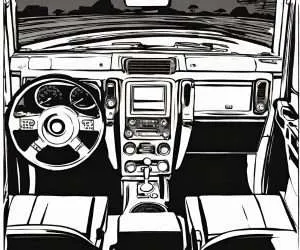
Best Jeep CB Radios for Off-Road Adventures
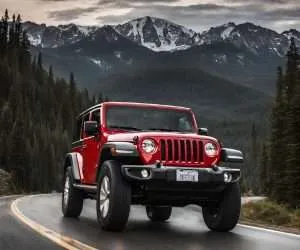
Jeep Wrangler History: From Military Roots to Modern Off-Roading Legend
Comparing general altimax rt43 vs altimax rt45.
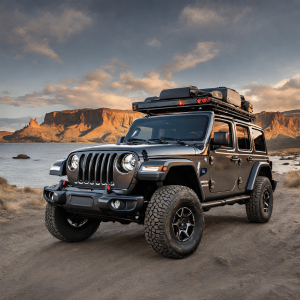
Jeep Wrangler Towing Capacity: A Comprehensive Guide

Jeep Wrangler Storage Solutions: Tips and Tricks for Maximizing Space

Michelin Crossclimate 2 vs Primacy Tour A/S: The Comparison
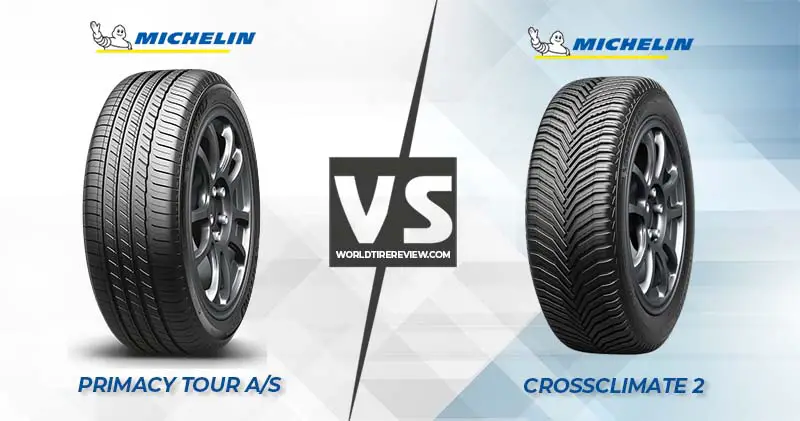
When it comes to good tires for your family vehicle, Michelin tires will be the most secure option regardless of automobile type. Let’s take a look at the comparison of two of the best options of Michelin tires: Crossclimate 2 and Primacy Tour A/S.
Michelin has a great reputation for manufacturing excellent car tires at a reasonable price. The majority of its products are used for medium-sized cars, such as SUVs, sedans, crossovers, etc. The brand is dedicated to bringing its consumer the most secure and comfortable experience.
Before comparing the two tires, we will go through the most highlighted characteristics of Crossclimate 2 and Primacy Tour A/S. Time to find out
Table of Contents
Michelin Crossclimate 2
The first product to analyze is Michelin Crossclimate 2. As the name implies, the standout feature of this tire is the ability to adapt to multiple environments. Let’s check out some of its characteristics.
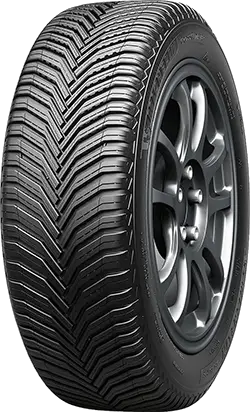
Crossclimate 2 comes in various sizes for different types of cars. It is capable of providing a comfortable driving experience in all weather: dry, light snow, wet, etc.
The product’s treads are designed with V-structures that line up infinitely, which helps balance while driving in different conditions. Thanks to the patterns that follow Michelin’s Noise reduction module PIANO perfectly, you can expect a significant drop in noise during traveling.
The manufacturer had added a sophisticated series of aligned blocks at the center of the tread. This structure enhances the ability to accelerate and decelerate the car. It also improves the traction pressure off the brake when doing hard turns or handbrakes.
There are integrated lines of blocks on the shoulder to support handling and increase traction in bad weather. These blocks are specifically designed with 3D SipeLock technology, the latest tire modeling technology designed by Michelin.
Moreover, grooveless patterns on both sides of the tire help balance the wheel and contribute to the traction force. This is extremely helpful during winter under light snow.
Coming inside of the tire are polyester plies with two steel belts. The entire reinforcement is included to increase maximum speed and performance.
Crossclimate 2 is not doing great under too heavy snow despite working well in many weather conditions. Moreover, it tends to wear out after approximately 15000 miles, and the treadwear is not that impressive either.
Primacy Tour A/S
Primacy Tour A/S is also a Michelin all-season tire. Though bearing some similarities, it is well engineered to conquer difficult terrains and become a powerful contender in the battle of Michelin Primacy Tour A/S vs Crossclimate 2!
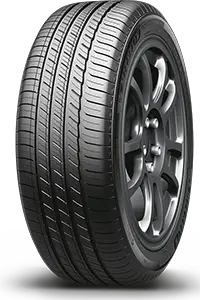
Like Crossclimate 2, Primacy Tour A/S is designed for personal and family vehicles, guaranteed to boost the driving experience with all-season capability. It is capable of handling almost all-terrain under any type of weather.
The tire features some similar enhancements to Crossclimate 2, including PIANO Noise reduction . The module comes with smooth bands to further cut down noises. Circular patterns are present on the tire tread to support water drainage and prevent hydroplaning.
The highlight of this product is its reinforced layer of silica. It strengthens the durability of the tire and boosts its traction in heavy weather. The silica helps extend its useful life, making it last longer on the road.
One of the most noticeable traits of Michelin Primacy Tour A/S is its zig-zag sipes. The sipes significantly assists the ability to maneuver under snowy weather, adding more traction to hold steadily while driving under such conditions.
The internal design of Primacy Tour A/S is quite impressive, with polyester cords and two steel belts to stabilize the tread. It comes with a polyamide structure to reinforce handling and improve balance while driving.
There are some flaws coming along with its great performance. The price of Primacy Tour A/S is slightly higher than most tires of the same type. Some dirt or gravel paths can be difficult to travel on, as the traction pressure of this tire is not powerful enough to balance.
Pros and Con
- Great performance
- Good traction and braking ability
- Less durable
- Weak maneuvering under heavy snow
- More durable
- Balance under snow and rain
- Great noise suppression
- Weak on dirt paths
- More expensive
In-Depth Comparison of Michelin Crossclimate 2 vs Primacy Tour A/S
Now, we will compare the different characteristics of the two amazing tires.
Both of the tires are extremely durable against different environmental conditions, thanks to technologies developed by Michelin. However, Primacy Tour A/S has proven stronger with the silica layer , which promotes its lifespan and durability.
Therefore, the winner of this round is Primacy Tour A/S. There are good reviews from actual drivers praising the outstanding performance of this product.
Crossclimate 2 is very dependable for drivers under most weather conditions unless it gets extreme (heavy snow). Primacy Tour A/S, on the other hand, possesses a creative design that can protect the driver from not just bad weather but also bad roads.
From those measures, we are certain that Primary Tour A/S is more efficient than Crossclimate 2. It won this round again!
Internal support
The internal design of these tires is very creative and not so different from each other. The support bars, though, are there for distinctive purposes. Crossclimate 2’s bars are designed to boost the speed and performance, whereas Primary Tour A/S ensures the stability of the wheels.
Weakness Comparison
Crossclimate 2 is less durable than other tires, as it often wears down after 15000 miles. In addition, it is not capable of withstanding extreme weather and road conditions, so this might be a flaw in its performance.
Primacy Tour A/S, on the other hand, does not perform great on the dirt road and off-road paths since it may deteriorate the treads of the tire. It is a bit more expensive than most tires of the same type, with similar functions.
Based on these weaknesses, Primacy Tour A/S has an edge over the Crossclimate. Sure it can be slightly more pricey; however, the quality of the tire is undeniable.
Final Verdicts
In conclusion, the winner is Primacy Tour A/S. With outstanding performance and durability, it has proven itself an excellent option for medium-sized vehicle drivers.
Still, Crossclimate 2 is a well-suited choice for those with a decent budget. It will bring you the best driving experience like never before while protecting your wheels from all harm. You will not be disappointed by its amazing performance.

David Barlow
Automotive Experts at World Tire Review
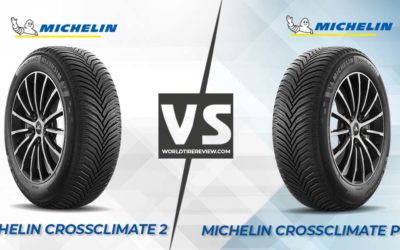
Michelin Crossclimate 2 Vs Crossclimate Plus Vs Crossclimate SUV
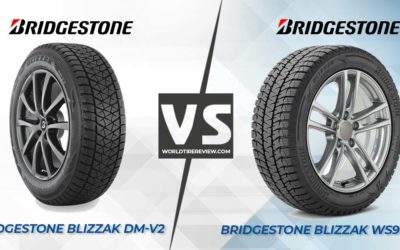
Bridgestone Blizzak DM-V2 Vs WS90: What Is The Difference Between?
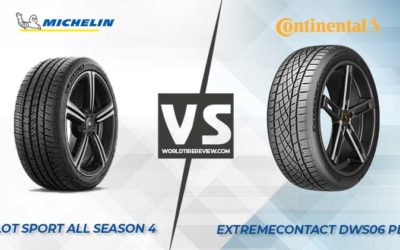
Michelin Pilot Sport All Season 4 Vs Continental Extremecontact DWS06 Plus
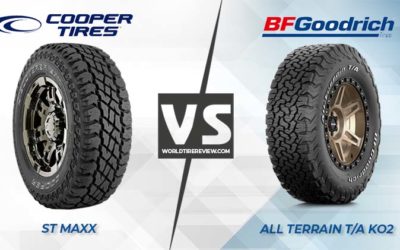
Cooper ST Maxx vs BFGoodrich All Terrain T/A KO2 In 2022
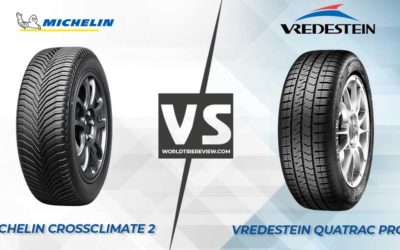
Vredestein Quatrac Pro Vs Michelin Crossclimate 2: Thorough Comparison
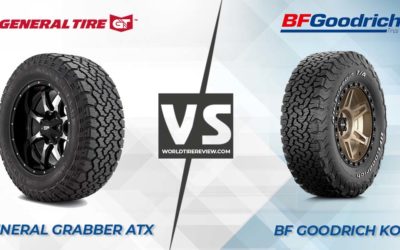
General Grabber ATX Vs BFGoodrich All-Terrain T/A KO2 – How Different They Are

Michelin Latitude Tour HP vs Continental CrossContact LX25
When it comes to Crossover Touring All-Season tires, both the Michelin Latitude Tour HP and the Continental CrossContact LX25 are great options, designed to cater to the diverse needs of modern SUVs. But which out of them is a better pick for you? Well, let’s find out.
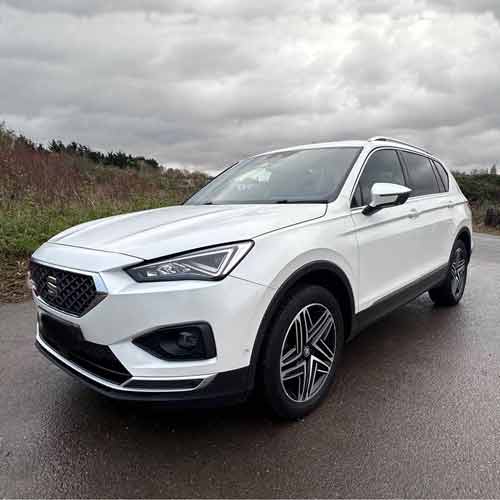
So overall, the Michelin Tour HP takes the lead in:
- Superior linear and lateral dry grip.
- Faster average braking distance.
- Quicker steering response and handling.
- Enhanced directional grip due to elongated ribs and dense central tread.
Detailed Discussion on Tour HP .
Whereas CrossContact LX25 excels in:
- Better handling in snow and ice with open tread design and flexible biters.
- Superior wet performance with dense siping and softer compound.
- Enhanced ride comfort and reduced noise levels.
- Longer tread life and improved resistance to hydroplaning.
Info on Sizes
The Michelin Latitude Tour HP comes in 16 to 22 inches rims, and they have the following specs.
- Speed ratings: H, V, W, and Y.
- Load ratings: SL and XL.
- Tread depth range: 9 to 10/32″.
- Weight range: 27 to 43 lbs.
- Treadwear warranty: 55k miles for H and V rated sizes, and 45k for W, and Y speed rated ones.
- UTQG rating: 440 A B.
- Internally, the tire comes with a single-ply polyester casing, flanked by two steel belts and a nylon cap ply.
On the other side, the Continental CrossContact LX25 comes in 16 to 22 inches wheels, with following specs.
- Speed ratings: T, H and V.
- Tread depth range: 12/32″ on all.
- Weight range: 25 to 42 lbs.
- Treadwear warranty: 70k for H and T rated sizes, and 65k for V speed rated ones.
- UTQG rating: 740 A A.
- Internally, the tire comes with a 2-ply polyester casing, with two steel belts, spirally wound polyamide cap ply, and an absorption layer for comfort performance (which Continental likes to call Comfort Ride Technology).
Performance on Dry Roads
Let’s explore the crucial aspects of dry tire performance separately: assessing the linear and lateral grip and the steering response.
Directional Grip
The primary factor affecting a tire’s “straight-line” or directional traction is its central region.
But why does the central tread footprint hold such importance?
Well, this area endures the bulk of concentrated weight (of vehicle and tire itself), particularly when the tire is in linear motion. In fact, this is the reason tires often have continuous ribs or denser lugs at the center compared to their shoulders.
Now, here the Latitude Tour HP takes the upper hand, demonstrating a feet shorter average braking distance, (which is how this grip gets measured).
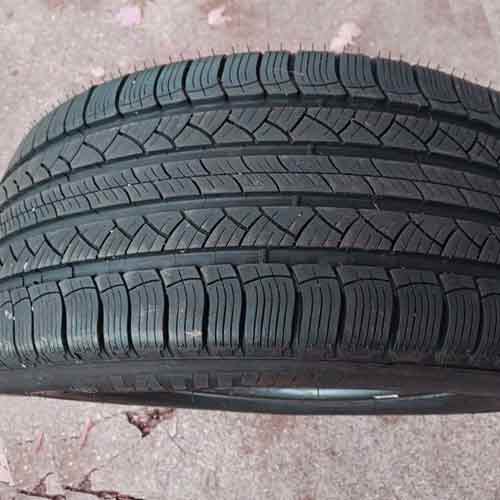
This Michelin’s tire basically is designed with elongated ribs and fewer voids, enhancing road contact and thereby increasing friction and grip.
Conversely, the Continental CrossContact LX25 features a more voided central rib, which slightly diminishes its performance compared to the Michelin, despite the marginal difference of less than a foot.
Lateral Traction
When it comes to dry handling, you’ve really got to focus on how well the car grips to the side (lateral traction) and how quickly it responds to steering.
Now, talking about grip first, both these tires are pretty good here. I mean both of them are pretty much neck and neck, giving you similar lateral g forces (on tests, on average).
This is mainly because both boys offers a lot of biters.
The Michelin Latitude Tour HP has some very effective in-groove notches/ deep cuts giving the tire bite. I am talking about those longitudinal voids in its shoulders and multi-directional ones on the central ribs.
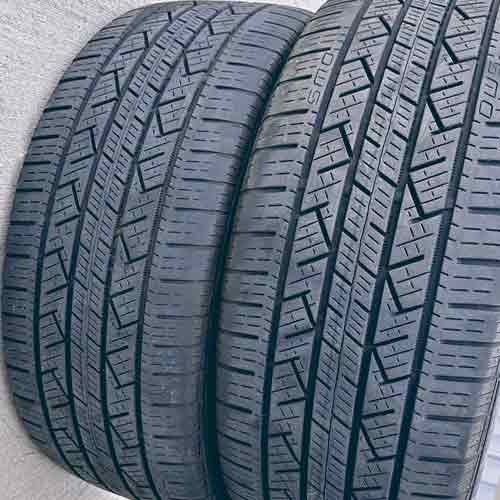
Whereas the CrossContact LX25 offers the same. As you can see (in its tread image), it offers similar multi-directional in-block notches on the ribs (also called block columns) between central most and shoulder ribs.
Though, when we talk about overall handling, Michelin’s the one beating the clock, being over a 0.5 seconds quicker in handling lap tests, mostly all thanks to its stellar steering feel.
Steering Dynamics
Before we jump in, it’s crucial to grasp the three key stages of cornering:
- Entry: This is the beginning of the turn, where braking comes into play.
- Mid-Corner: At this point, the car is halfway through the turn, and steering response becomes critical.
- Exit: Finally, as you straighten the car out, the tire’s ability to re-center without slipping is what matters most.
The Michelin Latitude Tour HP shines in all these areas. As mentioned earlier, it offers slightly faster braking (due to its superior directional grip).
Moreover, its solid steering feedback during the mid-corner and exit phases ensures stable tire performance without any over or understeering issues.
Conversely, the Continental CrossContact LX25 isn’t terrible, but its steering response is slightly slower compared to the Latitude.
Why is this? Well, the answer lies in its design.
The tire basically lacks with its Comfort Ride Technology, which incorporates a cushioning layer above the nylon cap plies, leading to a softer tire structure.
This design makes the tire’s lugs more flexible, which, while comfortable, can slightly affect the tire’s balance and lead to a bit of understeering.
Ride Comfort
Driving comfort hinges on two things: the noise level of the tire tread and the tire’s proficiency at cushioning road irregularities. Let’s dissect and understand these components.
Noise Reduction
When assessing tire noise, it’s essential to understand that it primarily comes from air particles hitting the tread walls. In other words, as tire rolls, air gets compressed in and out of the tire hitting tread and features on it, generating unwanted sounds.
That’s why out of both tires, the Continental CrossContact LX25 comes out quieter (on decibel scale), with its packed up shoulder blocks, and adjacent (continuous-running ribs), blocking lateral voids.
This limits the air entry in the first place, handling noise at its source.
Moreover, the tire also features a relatively more absorbent rubber composition and structure, keeping in-groove resonance (or echoing of noise) to a minimum as well.
Impact Comfort
The smoothness of a ride largely hinges on a tire’s capacity to absorb road irregularities effectively. And here the Continental’s tire once again stands out as a more preferable option.
This superior comfort is due to the LX25’s distinctive design, featuring an extra layer atop its nylon cap plies, specifically engineered to soften the impact of road bumps, (aptly named the Comfort Ride Technology).
Additionally, its polyester casing features a more flexible makeup, further enhancing the tire’s ability to adapt and smooth out the ride.
And yes one more thing, the tread on CrossContact is also infused with +Silane additives. While primarily aimed at increasing fuel efficiency, these additives also play a significant role in diminishing road vibrations, contributing to a more serene driving experience.
Side Note : You may want to check out my detailed post on noise and comfort from all-season tires .
Wet Performance
Wet performance requires a lot of engineering, mostly because of the fact that water can not be squeezed. Meaning, it has to go somewhere otherwise it would cause tire to float or “hydroplane”.
Come in the sipes and the grooves.
Grooves play a primary role in shifting most of the water, but sipes enhance this by a significant margin.
At a glance, these sipes might just look like small cuts, but they’re crucial for improving grip, functioning at a microscopic level, as they expand to expel air and contract to create a suction effect, pulling in water particles (left out by the grooves).
Now, taking this in to account reveals two essential features of an effective wet tire:
- First, it must have plenty of sipes.
- Second, it must use these sipes or maintain tread flexibility.
This understanding clarifies why the Michelin Latitude Tour HP falls a bit short in wet conditions (in my tests).
Despite having plenty of curved interlocking sipes, its stiffer compound limits their flexibility, diminishing its wet handling performance (for the most part).
On the other hand, the Continental CrossContact LX25 fares better, featuring denser siping along with a softer compound, ensuring the sipes stay flexible, even during tight maneuvers.
Additionally, this tire has more “voids”, offering improved resistance to hydroplaning. Its slightly balder tread leads to faster water dispersal, enhancing traction by reducing the initial reliance on sipes.
To really shine in tread life, a tire needs a mix of robust construction and smart design. This often involves using tougher rubber to withstand wear while ensuring a steady grip under different conditions.
Now out of both tires here, the CrossContact LX25 is better here, offering 60 to 70k miles on average (throughout its tread life).
This is primarily due to its comparatively lighter structure, despite having more layers in its build.
This reduced weight translates to less pressure on the tire’s lugs when they hit the road, which in turn helps prolong the tire’s tread life.
Conversely, the Michelin Latitude Tour HP, tailored for “high-performance” SUVs although provide superior grip, this benefit is offset by increased rolling resistance, which not only shortens the tire’s lifespan but also affects fuel efficiency.
For those curious about Michelin’s range, it’s worth considering the standard Michelin Latitude Tour, not the “HP” model. Though they look similar, the standard version boasts a longer tread life with a 65,000-mile warranty, while the HP variant’s warranty ranges between 45,000 to 55,000 miles, depending on the speed ratings.
Winter Traction
When evaluating how well tires perform in winter conditions, three important aspects are considered:
- How well the tire handles.
- How well it maintains direction on slippery surfaces.
- And how well it accelerates, especially on snow and ice.
Now, here, the Michelin Latitude Tour HP, with a ton of biters and siping although offers appreciable performance, it still lacks to Continental’s tire due to its stiffer rubber composition.
Basically, its biters tend to stiffen up (further) with colder temperatures, losing traction.
On the other hand, the Continental CrossContact LX25 is designed with features that make it more suitable for harsh winter conditions.
It’s a bit narrower (section width), and has an open tread design, which is effective at moving snow out of the way, helping the car move better in snowy conditions.
Moreover, the shape of its tread elements, or “biters”, is especially good at holding onto snow, which improves traction because snow sticks better to itself than to rubber.
Overall, while both tires have their strengths, the CrossContact LX25 stands out for its versatile performance across various conditions, making it a more reliable choice for SUV owners.
Though the Michelin Latitude Tour HP does offer superior dry performance with its elongated ribs and dense central tread, providing excellent directional grip and braking.
But yes, it falls short in wet and winter conditions due to its stiffer composition.
And this stiffer rubber of this tire also puts it behind in terms of road comfort performance as well.
Leave a Comment Cancel reply
Save my name, email, and website in this browser for the next time I comment.
Hi Folks. I'm Ozmen, and I work as a tire designer. I understand finding a tire isn't easy, as there are so many variables involved. But with me around, tire selection would never bother you again.

Driving directions
The route deemed to be the safest and simplest with minimal scope for error along the way. The default recommended route from Michelin.
The route offering the shortest distance to a destination via the most accessible roads. Journey times for this option will tend to be longer.
The most fuel-efficient route that also avoids toll roads.
My cost options
- B7 (Diesel)
- E5 (Unleaded)
- E85 (superethanol)
- CNG (Biomethane)
- H2 (Hydrogen)
My route options
- E5 (Unleaded) €1.700
- Route : Fast
- Distance in : Kilometres
- No restrictions
Services at Lytkarino
Tourist attractions.
- Kuskovo Estate-Museum
- Route from this place
- Directions to this place
- Route via this place
- Nearby hotels
- Nearby restaurants
Alternative travel
Arrive at lytkarino organise your trip, accommodation, other services, restaurants at lytkarino.
- See restaurants from the Michelin selection
Tourist Attractions at Lytkarino
- View the must-see tourist sites
Tourist Attractions Things to see and do Lytkarino
- Kolomenskoye estate: Church of the Ascension The Green Guide 17.8 km - Moskva activities details
- Kolomenskoye Estate Museum The Green Guide 17.9 km - Andropova proezd 39, Moskva activities details
- Kolomenskoye Estate The Green Guide 18 km - Andropova proezd 39, Moskva activities details
More tourist attractions in Lytkarino
Keep in contact
My michelin account.
Work in progress.
- Compare Tires
- CrossClimate 2 vs Latitude Tour
Michelin CrossClimate 2 vs Michelin Latitude Tour
More comparisons with these tires.
- Michelin Premier LTX vs Michelin Latitude Tour
- BFGoodrich Advantage T/A Sport LT vs Michelin Latitude Tour
- Michelin Latitude Tour vs Cooper Zeon LTZ
- Cooper Evolution H/T vs Michelin Latitude Tour
- Michelin Defender T+H vs Michelin Latitude Tour
- Bridgestone Turanza QuietTrack vs Michelin Latitude Tour
- Michelin Defender LTX M/S vs Michelin Latitude Tour
- Goodyear Assurance All-Season vs Michelin Latitude Tour
- Yokohama AVID Ascend vs Michelin Latitude Tour
- Michelin Latitude Tour vs Goodyear Assurance MaxLife
- Michelin Latitude Tour vs General Grabber HTS 60
- Nexen N FERA AU7 vs Michelin Latitude Tour
- Michelin Latitude Tour vs Hankook Dynapro HP2 RA33
- Michelin Latitude Tour vs Michelin CrossClimate
- Michelin Primacy HP vs Michelin Latitude Tour
- Michelin CrossClimate 2 vs Michelin CrossClimate
- Bridgestone Turanza QuietTrack vs Michelin CrossClimate 2
- Michelin Pilot Sport All Season 4 vs Michelin CrossClimate 2
- Michelin Latitude Tour HP vs Michelin Latitude Tour
- BFGoodrich Advantage T/A Sport vs Michelin Latitude Tour
- Michelin Pilot Sport A/S 3+ vs Michelin CrossClimate 2
- Michelin CrossClimate 2 vs Michelin Primacy MXM4
- Michelin Latitude Tour HP vs Michelin CrossClimate 2
- Michelin Defender LTX M/S vs Michelin CrossClimate 2
- Michelin LTX A/S vs Michelin CrossClimate 2
- Yokohama AVID Ascend vs Michelin CrossClimate 2
- Michelin Premier LTX vs Michelin CrossClimate 2
- Michelin Premier A/S vs Michelin CrossClimate 2
- Michelin CrossClimate 2 vs Goodyear Assurance MaxLife
- Michelin CrossClimate 2 vs Michelin Defender T+H
How do we compare tires?
Our database encompasses data on various tire attributes, gathered from public records, tire road tests, online forum assessments, and driver's reviews. This data enables the objective evaluation of tire performance across diverse environments such as dry and wet surfaces, snowy conditions, and off-road scenarios.
Additionally, our comparisons extend to aspects like the brake responsiveness of the tires. Factors such as noise level and ride smoothness are also considered to gauge comfort. Furthermore, our analysis addresses the impact of tire selection on fuel economy, offering insights into how different tires may affect vehicle mileage and fuel efficiency.
ZNAMYA-NOGINSK - FSSH-VOSTOK-ELEKTROSTAL head to head game preview and prediction

Oops! We detected that you use AdBlocker...
Please disable adblocker to support this website. Thank you!
I disabled all my adblockers for this website. Reload...
Open Modalf

IMAGES
VIDEO
COMMENTS
Factors such as noise level and ride smoothness are also considered to gauge comfort. Furthermore, our analysis addresses the impact of tire selection on fuel economy, offering insights into how different tires may affect vehicle mileage and fuel efficiency. Which tire is better: compare Michelin CrossClimate SUV vs Michelin Latitude Tour HP.
Both are all-season tires. Latitude Tour HP; Provides better grip on a dry road. Offers more controlled steering on paved surfaces. Ranks as a quieter tire in comparison. Crossclimate 2. Shows enhanced grip on a wet road. Provides supreme resistivity from aquaplaning. presents more ability for winter performance.
The CrossClimate² meets industry severe snow service requirements and is designed to be a one-tire solution for drivers in environments that experience all four seasons, but don't receive sufficient snowfall to require a dedicated winter tire. The Latitude Tour HP is Michelin's Crossover/SUV Touring All-Season light truck tire developed for ...
Wet Traction. In wet conditions, the CrossClimate 2 performs better than the CrossClimate SUV, due to its specific tread design and greater in number siping. These sipes, or small cuts in the tread, effectively remove water particles, enabling better grip.
Michelin Latitude Tour HP or CrossClimate2 ? ... But the Latitude Tours are actually more expensive than the CrossClimate 2 ($312 for Latitude Tour HP vs $289 for CrossClimate 2, ... I wouldn't worry too much about the CC SUV vs. 1 vs. 2. Looking on tirerack, have you considered the Continental Crosscontacts? It looks like they will be fine for ...
19''. 20''. 21''. MICHELIN® Latitude® Tour HP™ 235/60R18 102V LEX BSW. MICHELIN® Latitude® Tour HP™ 235/60R18 103V N0 BSW. MICHELIN® Latitude® Tour HP™ 235/60R18 107V XL JLR BSW. MICHELIN® Latitude® Tour HP™ 235/65R18 110V XL JLR BSW. MICHELIN® Latitude® Tour HP™ 245/60R18 105H ACU BSW.
SUV and Crossover tire that features outstanding fuel efficiency and long tread life coupled with impressive on-road comfort and handling. Quiet Ride. Low Rolling Resistance. Supported by the Michelin Promise Plan of a 60-day satisfaction guarantee, roadside assistance, and a 65,000-mileage warranty. Click here for details.
In this particular case, the Michelin Pilot Sport 4 has a better rating of 88% compared to 17% of the Michelin Latitude Tour HP. When it comes to comparison, eu labels can be also interesting - 69% of Michelin Latitude Tour HP has C wet grip rating, whereas 84% of Michelin Pilot Sport 4 has A rating. #.
The price ranges from $115 on the low end of the 16" tire to $240 on the high-end for the 21" tire. The average price of the Michelin Latitude Tour HP tire is approximately between $140 and $170 for the 18" tires. The average price of all-season SUV and 4×4 tires comes to between $80 and $150, with SUV cars typically needing a higher-end ...
Michelin Crossclimate SUV might be quieter. ... The CrossClimate is highly directional, so basically the best you can do is move front to back on the same side unless they get dismounted and remounted every other time they get rotated. ... I had Michelin Latitude Tour HP's on my 2016 outback 2.5i limited 225/60/18. Unfortunately, they did not ...
Comparing on Price. It's no shock that the CrossClimate 2 comes with a higher price tag than the WR G4. Looking at the numbers, the starting price for the CrossClimate 2 is $173.99 at Simple Tire, while you can snag the WR G4 for $157.34. If saving some cash is high on your list, then the WR G4 stands out as the go-to choice.
Internal support. The internal design of these tires is very creative and not so different from each other. The support bars, though, are there for distinctive purposes. Crossclimate 2's bars are designed to boost the speed and performance, whereas Primary Tour A/S ensures the stability of the wheels.
The Michelin Latitude Tour HP comes in 16 to 22 inches rims, and they have the following specs. Speed ratings: H, V, W, and Y. Load ratings: SL and XL. Tread depth range: 9 to 10/32″. Weight range: 27 to 43 lbs. Treadwear warranty: 55k miles for H and V rated sizes, and 45k for W, and Y speed rated ones. UTQG rating: 440 A B.
The default recommended route from Michelin. Quickest. The route likely to offer the shortest journey time to the chosen destination, favouring main roads and, in particular, highways. Shortest. The route offering the shortest distance to a destination via the most accessible roads. Journey times for this option will tend to be longer.
HOME; ABOUT US; TRAVEL AGENTS; FAQ/HELP; CONTACT US; CALL US @ +7-981-863-3502; Copyright © 2000-2024 Moscow Hotels, JSC. All rights reserved.
Find company research, competitor information, contact details & financial data for BM BERGBAUTEKNIK, AO of Elektrostal, Moscow region. Get the latest business insights from Dun & Bradstreet.
SUV and 4x4: Category: All Season Premium Touring tires: All Season Touring tires: Tires scores compare: Overall: 84.1% : 79.9% : Overall Dry: 78% : 79.7% : Corner Stability: ... Michelin Latitude Tour HP vs Michelin CrossClimate 2; Michelin Defender LTX M/S vs Michelin CrossClimate 2; Michelin LTX A/S vs Michelin CrossClimate 2;
ZNAMYA-NOGINSK vs FSSH-VOSTOK-ELEKTROSTAL team performances, predictions and head to head team stats for goals, first half goals, corners, cards. RUSSIA MOSCOW-OBLAST-CHAMPIONSHIP---LEAGUE-A